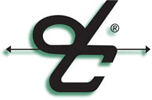The David Clark Company series 9900 wireless intercom system provides aircraft deicing personnel with the ability to communicate clearly in extreme noise and weather conditions. Drivers, bucket operators and other personnel can communicate hands-free during critical deicing operations.
Along with noise-attenuating headsets, offering superior comfort and quality construction, system components include wireless gateways and belt stations that provide the rugged durability that deicing operations demand. The 9900 system enhances safety for ramp personnel and also provides protection from costly accidental damage to aircraft. The added benefit of wireless mobility and freedom helps both the bucket operator and driver work more efficiently.
The 9900 system can be configured to provide onboard radio transmit capability for all wireless users, enhancing the system’s versatility by affording communications apart from and outside the intercom itself. In this configuration, the U9922-G38 wireless gateway is installed in the deicing vehicle, powered directly from the vehicle’s battery (8-32 VDC) and connected to the vehicle’s mobile radio.
Linked to the gateway are belt stations worn by both the driver and bucket operator, providing full-duplex, hands-free communication with one another through 9900 series noise-attenuating headsets and radio transmit through the belt station’s PTT switch.
For deicing applications not requiring a radio, a controller belt station worn by the vehicle driver acts as the system gateway, and is linked to the belt station worn by the bucket operator. This configuration provides simple two-way, hands-free intercom communication.
Controller belt stations and standard belt stations also provide a unique VOX circuit, which in conjunction with the headset’s noise-canceling microphone; effectively eliminate ambient noise from the system. This VOX feature includes a ‘helper tone,’ present in the user’s headset when adjusting the squelch control, which disappears upon achieving the optimal VOX setting and assisting the user to quick, efficient changes in squelch adjustment where extraneous noise levels can frequently change.
Series 9900 headsets include the model H9930, over-the-head style (bucket operator) and the model H9990, over-the-head, single ear design (driver). Headset features include individual volume controls, stainless steel hardware to resist corrosion, low tension headband assemblies and undercut gel ear seals for maximum comfort.
Belt Stations transmit and receive all system audio to and from the wireless gateway or controller belt station and the user’s headset. Belt station batteries are easily removable and replaceable within seconds, allowing the belt station to stay in service during charging.
Battery life can last for up to 24 hours of continual use before recharging is required. Belt stations are also equipped with a large PTT switch which serves as a link button as well as a radio transmit switch (where applicable). A 360-degree, rotational belt clip is included for secure fastening of the belt station anywhere on the user’s apparel.
Both the U9922-G38 gateway and controller belt station act as a relay for all audio between belt stations and facilitate hands-free, full-duplex communication for all users. Completing the system is a 4-bay battery charger; a true smart-charger with successive charge stages (constant current, voltage and trickle charge), LED indicators for each battery, and a thermal monitoring circuit for the battery’s internal thermistor to ensure safe, effective charging from a complete discharge within 3-4 hours.
Headsets and belt stations come with a one-year warranty, and the U9922-G38 gateway and battery charger carry a five-year warranty.
David Clark Company wireless systems are compatible with most HF, VHF and UHF radios. EU versions are also available for operation outside of the US. For more information about David Clark Company wireless communication systems for deicing and other ground support applications, including pushback and ramp operations, visit David Clark Company’s website.

